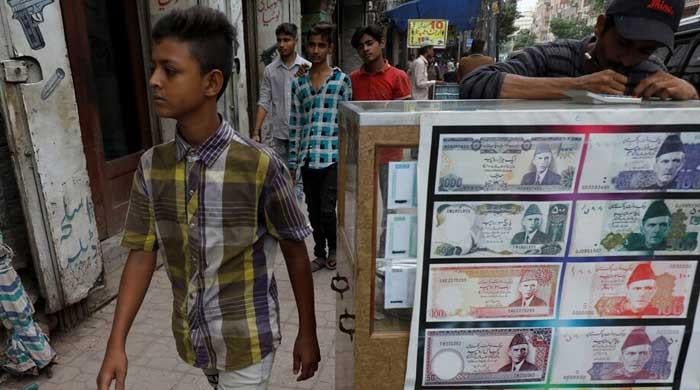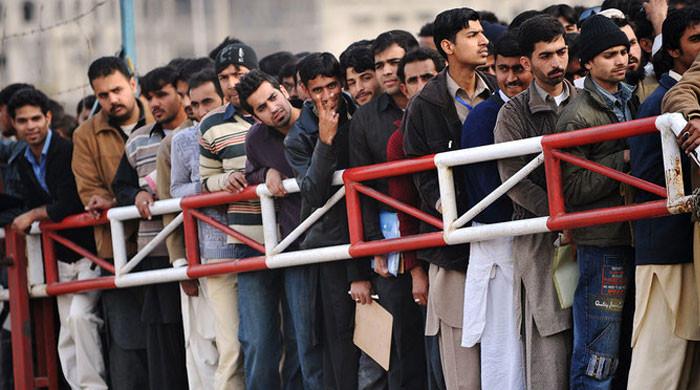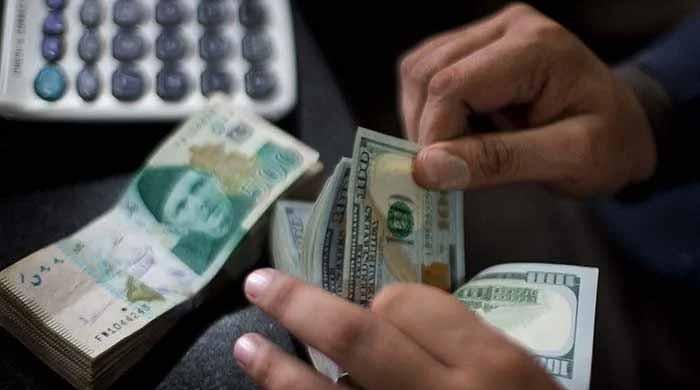Tweaks, but no reform
Change in direction urgently needed. Budget could've started this process of reforming economy but it missed this opportunity
June 11, 2025

Another year, another budget. And another opportunity missed. How many more opportunities do we have left? How many more kids need to remain uneducated before we mend our ways?
How many more young women or men will have to remain unemployed before we reform our governance? How many kids will have to be born into abject poverty before we fundamentally change the direction of our country?
Policies made by our governments have serious consequences for the lives of our people. Decisions about support prices or agricultural input subsidies can destroy or improve the lives of millions of farmers. An increase in income support stipends can prevent kids from going hungry. A change in customs duties or excise tax can result in factories remaining open or shutting down.
Budget or fiscal policies result in Pakistanis becoming richer or remaining poor. Since General Musharraf's time, Pakistan has not been able to achieve sustainable growth and keeps falling behind peer countries. A change in direction is urgently needed. Our budget could have started this process of reforming the economy. But it missed this opportunity.
Our budgets have to reckon with two constitutional arrangements. First, the federation not being allowed to tax agricultural incomes and property and second, provinces getting 60% of all federal taxes. Because the federation is not allowed to tax 23.5% of national income (agriculture) and a majority of national wealth (urban and rural properties), it has to tax the remaining income and wealth (in various stages and shapes) more and more to cover its growing expenses.
Since 60% of what it collects goes to the provinces, it has to impose ever-higher taxes on the existing taxpayers. These punishing taxes are disincentivising income generation and these deficits are making growth elusive in Pakistan.
Unless these constitutional constraints are addressed and we eliminate high taxes and huge budget deficits, Pakistan will not be able to sustain growth. In the last three years, we have become poorer per capita every year, and this pattern is likely to continue.
As most budget speeches do, this one included a lot of ‘show and tell’, celebrating macroeconomic stability (the credit for which primarily goes to lower international oil and commodity prices), a positive current account deficit (caused by extremely high interest rates that constrained economic and industrial activity), and a low inflation rate (above factors plus record high-income tax rates).
But at least these claims are real. The government also claimed economic growth of 2.68% for FY2024-25, which while being 1% below target, is also inflated, as per most analysts. We don't become richer because of the government’s claim that growth in the fourth quarter was 300% higher than the growth in the first three quarters. Only the credibility of the government’s data is undermined.
Against an initial tax target of Rs12,970 billion, the FBR will collect an estimated Rs11,900 billion for a shortfall of Rs1070 billion. Next year the target is Rs14,131 billion which is Rs2,231 billion or 19% more than this year’s collection. The government estimates that 11.7% of this growth will be organic growth (due to 7.5% inflation and 4.2% economic growth) and new tax measures are being undertaken for the remaining 7.0%. This means the government is introducing Rs821 billion of new taxes.
New tax measures are increased taxes on interest incomes from 15% to 20%, income tax on pensions exceeding Rs10 million, an increase in tax rate to 25% on mutual funds’ interest income, a 1.0% tax on withdrawal of cash from banks (from 0.6%), and tax on digital marketplaces and online retailers.
There is, however, a modest reduction in taxes for the salaried class. And when I say modest, it really is a verily modest relief. For instance, the government has decided that for those making between Rs2.2 million and Rs3.3 million, the tax rate will be reduced from 25% to 23%. And for those making more than Rs10 million a year, the 10% surcharge, over the 35% tax rate, will be reduced to 9.0%. These measures are from a government that collected less than Rs4 million from its Tajir Dost scheme.
Total taxes are not what the government collects but what it spends. Because what it spends over what it taxes has to be borrowed from banks, crowding out private investments. Eventually, you and your children will have to pay it back with interest, just as we are paying today for loans our governments took over the years. This year, the debt servicing cost to the federal government will be Rs8207 billion, or about Rs34,000 per Pakistani.
Again, we see no cut in expenditures anywhere. The federal government’s Public Sector Development Programme (PSDP) expenses will increase from Rs800 billion this year to Rs1,000 billion next year. Moreover, the National Economic Council approved "development" expenditures of Rs2,869 billion for the four provinces.
At a time when defence expenditures had to increase to Rs2,550 billion and relief was overdue for the salaried class, exporters and the very poor, the increase in PSDP expenditures speaks of this government’s poverty of ideas.
Two reforms were warranted in the Benazir Income Support Programme (BISP). The quantum of transfers needed to increase to Rs1,500 billion (it is budgeted at Rs716 billionn) and the programme needed to be handed over to the provinces (as income support is a provincial subject). Neither of these two urgently required reforms took place.
The government has allocated Rs3,100 billion for grants and subsidies. These include grants for AJK, GB, and the former Fata, Rs70 billion for Railways, Rs65 billion for higher education, and Rs1,036 billion in subsidies for the power sectors.
Pension reforms were to happen last year. They didn’t. This year, therefore, pensions will cost us Rs1,055 billion. The cost of running the civilian government has increased dramatically to Rs971 billion, 16% more than last year. With inflation less than 5.0%, such a huge increase makes little sense for a government claiming it wants to reduce the footprint of the government.
The government is forecasting economic growth of 4.3%. But given the new tax and spending measures and failure to provide any meaningful relief, that seems unlikely.
The writer is a former finance minister
Disclaimer: The viewpoints expressed in this piece are the writer's own and don't necessarily reflect Geo.tv's editorial policy.
Originally published in The News









